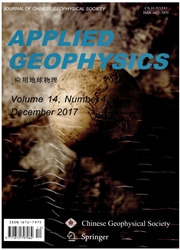

 中文摘要:
中文摘要:
局部优化和全局优化方法广泛应用到地球物理反演,但是两者各有其优缺点。将两类方法结合起来可以取长补短。将退火遗传算法(SAGA)和单纯形算法相结合,得到了一种高效、健全的2D非线性混合地震走时反演方法。首先,利用SAGA进行大范围的全局搜索,然后由单纯形方法进行快速局部搜索。为了降低层析成像的多解性,我们采用了多尺度逐次逼近的技巧。把速度场划分为不同的空间尺度,定义网格节点上的速度作为待反演参数,采用双三次样条函数模型参数化,正问题采用有限差分走时计算方法,反问题采用多尺度混合反演方法。一个低速度异常体的数值模拟试验和抗走时扰动试验表明该方法是有效和健全的。我们将该方法应用到青藏高原东北缘阿尼玛卿rlet,Meyer,Marr,缝合带东段上部地壳速度结构研究中。数字模型试验和实际资料的应用表明了方法的有效性和健全性。
 英文摘要:
英文摘要:
Local and global optimization methods are widely used in geophysical inversion but each has its own advantages and disadvantages. The combination of the two methods will make it possible to overcome their weaknesses. Based on the simulated annealing genetic algorithm (SAGA) and the simplex algorithm, an efficient and robust 2-D nonlinear method for seismic travel-time inversion is presented in this paper. First we do a global search over a large range by SAGA and then do a rapid local search using the simplex method. A multi-scale tomography method is adopted in order to reduce non-uniqueness. The velocity field is divided into different spatial scales and velocities at the grid nodes are taken as unknown parameters. The model is parameterized by a bi-cubic spline function. The finite-difference method is used to solve the forward problem while the hybrid method combining multi-scale SAGA and simplex algorithms is applied to the inverse problem. The algorithm has been applied to a numerical test and a travel-time perturbation test using an anomalous low-velocity body. For a practical example, it is used in the study of upper crustal velocity structure of the A'nyemaqen suture zone at the north-east edge of the Qinghai-Tibet Plateau. The model test and practical application both prove that the method is effective and robust.
 同期刊论文项目
同期刊论文项目
 同项目期刊论文
同项目期刊论文
 期刊信息
期刊信息
